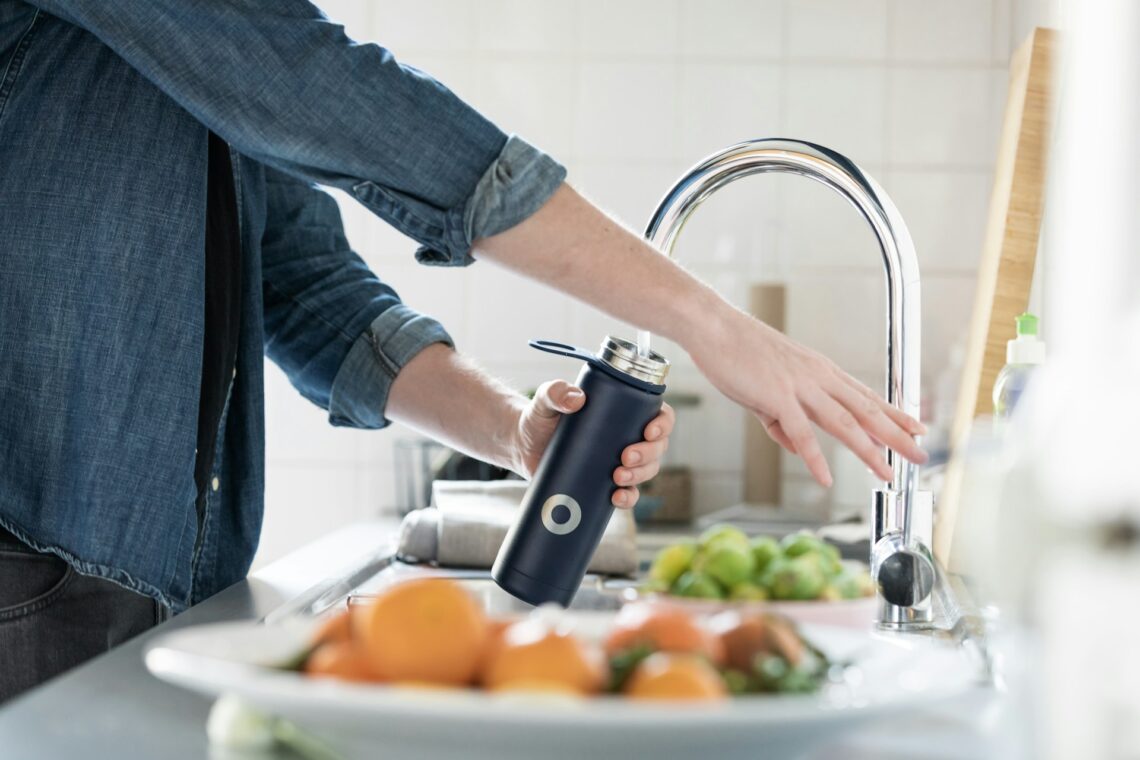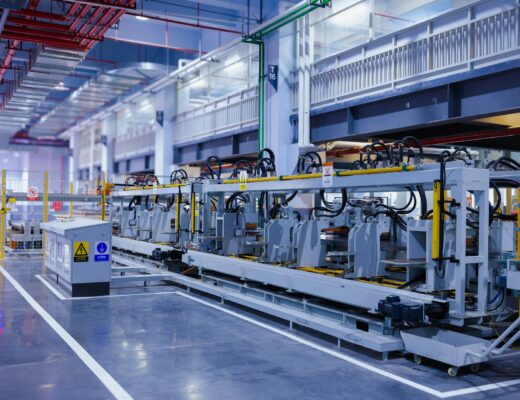Water contamination incidents occur more frequently than most property owners realize. According to the CDC, approximately 7.2 million Americans become ill from waterborne diseases each year, with many cases traced to preventable cross-connections in plumbing systems.
The good news? Proper safeguards can eliminate these risks. Most property owners assume their water supply remains safe as long as the municipal system functions correctly.
However, the greatest threats to water quality often originate within individual properties through reverse flow conditions that can introduce dangerous contaminants into drinking water supplies.
Understanding these risks and implementing appropriate protection measures represents one of the most important investments property owners can make.
When water systems experience pressure drops, equipment failures, or maintenance activities, contaminated water can flow backward through cross-connections into clean water supplies.
This reverse flow, known as backflow, can introduce chemicals, bacteria, fertilizers, and other hazardous substances directly into the water you use for drinking, cooking, and bathing. The consequences extend far beyond health concerns, potentially resulting in regulatory violations, legal liability, and costly remediation efforts.
Understanding Cross-Connection Hazards
Cross-connections create the pathways through which water contamination occurs. These connections develop when potable water systems come into contact with non-potable sources, creating opportunities for contamination during pressure fluctuations or system failures.
High-Risk Connection Points
Industrial and Commercial Equipment: Manufacturing facilities, laboratories, and medical facilities often utilize water for cooling, cleaning, or processing applications. These systems can introduce chemicals, bacteria, or other contaminants into the water supply through reverse flow conditions.
Irrigation and Landscaping Systems: Lawn sprinkler systems connected directly to municipal water supplies pose significant contamination risks when fertilizers, pesticides, or soil particles enter the water line during pressure drops or maintenance activities.
Swimming Pools and Water Features: Direct connections to pool filling systems can allow chlorinated water, algaecides, or other pool chemicals to enter the drinking water supply through siphoning action.
Heating and Cooling Systems: Boiler systems, cooling towers, and HVAC equipment that utilize water for steam generation or circulation can introduce rust, scale, chemical additives, or biological growth back into the potable water system.
Identifying Vulnerable Areas
Property owners should conduct systematic assessments to identify potential cross-connection points throughout their facilities. Critical areas requiring evaluation include:
- Utility and mechanical rooms where multiple water lines converge
- Kitchen facilities with commercial dishwashers or specialized equipment
- Maintenance areas with wash stations or equipment cleaning facilities
- Outdoor connections for irrigation, pressure washing, or maintenance activities
- Laboratory or medical spaces with specialized equipment requiring water connections
Backflow Prevention Technologies
Effective water protection requires mechanical devices specifically engineered to prevent reverse flow. These systems function as barriers between potable water supplies and potential contamination sources, ensuring unidirectional flow under all operating conditions.
Reduced Pressure Zone (RPZ) Assemblies
RPZ assemblies provide the highest level of protection for high-hazard applications. These sophisticated devices feature two independent check valves separated by a pressure-monitored chamber with a relief valve that discharges water to the atmosphere when pressure conditions indicate potential contamination.
Key Performance Features:
- Continuous pressure monitoring between check valves
- Automatic discharge of potentially contaminated water
- Suitable for high-hazard applications, including chemical processing
- Testable components for ongoing verification and compliance
Double Check Valve Assemblies
Double-check valve assemblies offer reliable protection for moderate-risk applications through two spring-loaded check valves installed in series. These devices prevent backflow through mechanical sealing when forward pressure stops or reverses.
Typical Applications:
- Residential and commercial irrigation systems
- Fire protection systems in standard risk environments
- Commercial buildings with conventional plumbing fixtures
- Industrial applications without toxic or hazardous materials
Atmospheric Vacuum Breakers
Atmospheric vacuum breakers provide simple, cost-effective protection against backsiphonage conditions. These devices operate by allowing air to enter the system when vacuum conditions develop, preventing the siphoning of contaminated water into the supply line.
Installation Requirements:
- Must be installed at least 6 inches above the highest downstream outlet
- Cannot be subjected to continuous pressure for more than 12 hours
- Requires proper drainage to prevent freezing damage
- Not suitable for applications with continuous downstream pressure
Testing and Maintenance Protocols
Regular testing ensures that prevention systems continue to function as designed throughout their service life. Most jurisdictions require annual testing by certified professionals, with specific procedures outlined in local codes and regulations.
Annual Testing Requirements
Certified testers utilize specialized equipment to verify that prevention devices operate within acceptable parameters. Standard testing procedures include:
Pressure Testing: Verifying that check valves seal properly under various pressure conditions and that relief valves open at correct pressure differentials according to manufacturer specifications.
Flow Testing: Confirming that devices allow adequate flow rates while maintaining protection capabilities during normal operation and emergency conditions.
Component Inspection: Examining seals, springs, valve seats, and other mechanical components for wear, corrosion, or damage that could compromise performance or reliability.
Maintenance Best Practices
Property owners should implement comprehensive maintenance schedules to ensure optimal performance and extend equipment service life:
- Monthly Visual Inspections: Check for leaks, corrosion, or physical damage to devices and surrounding areas
- Quarterly Operational Checks: Verify that relief valves discharge properly and check valves seal effectively
- Annual Professional Servicing: Replace worn components, calibrate devices, and update documentation
- Detailed Record Keeping: Document all testing, maintenance, repairs, and component replacements
Regulatory Compliance Framework
Water contamination regulations vary by jurisdiction, but most areas have adopted standards based on national codes and industry best practices. Property owners must understand their local requirements and maintain ongoing compliance through proper installation, testing, and documentation.
Common Regulatory Requirements
Installation Standards: Specific requirements for device placement, sizing, and installation methods based on application type, hazard level, and local water pressure conditions.
Testing Frequencies: Mandatory annual testing schedules with certified professionals, plus additional testing after repairs, modifications, or system disturbances.
Record Keeping: Documentation requirements for installation, testing, maintenance, and repairs, typically maintained for multiple years and available for regulatory inspection.
Notification Protocols: Requirements to notify water utilities and regulatory agencies of installations, test results, system modifications, and compliance issues.
Liability and Risk Management
Property owners face potential liability for water contamination incidents resulting from inadequate protection measures. Insurance policies may exclude coverage for contamination events that could have been prevented through proper safeguards and maintenance.
Risk Management Strategies:
- Implement comprehensive prevention programs based on professional assessments
- Maintain detailed documentation of all compliance activities and testing results
- Work exclusively with certified professionals for installation, testing, and maintenance
- Review insurance coverage for water contamination risks and liability exclusions
Economic Benefits of Comprehensive Protection
Investing in water protection systems provides significant economic advantages beyond regulatory compliance. These benefits include reduced liability exposure, lower insurance premiums, and protection against costly contamination incidents that can disrupt operations and require expensive remediation.
Cost-Benefit Analysis
Initial Investment: While prevention systems require upfront investment, costs are typically modest compared to potential contamination remediation expenses, legal fees, and business interruption losses.
Ongoing Expenses: Annual testing and maintenance costs are predictable and manageable, providing budget certainty while ensuring continued protection and compliance.
Avoided Costs: Proper protection prevents expensive cleanup efforts, regulatory fines, legal fees, and business interruption costs associated with contamination incidents.
Long-Term Value Creation
Properties with properly installed and maintained protection systems often experience enhanced value through:
- Increased Property Values: Demonstrated commitment to water safety increases marketability and tenant confidence
- Reduced Insurance Costs: Many insurers offer discounts for properties with comprehensive protection programs
- Operational Continuity: Avoided disruptions from contamination incidents or regulatory violations
- Reputation Protection: Proactive safety measures enhance stakeholder confidence and regulatory relationships
Implementing Effective Protection Strategies
Successful water protection requires a systematic approach that addresses all potential risks while ensuring ongoing compliance and effectiveness. Property owners should develop comprehensive strategies tailored to their specific circumstances, risk profiles, and regulatory requirements.
Assessment and Planning Process
Begin with a thorough assessment of your property’s water systems, identifying all potential cross-connection points and evaluating associated risks. This assessment should include:
System Mapping: Document all water lines, connections, and equipment that could create cross-connection risks, including seasonal or temporary connections.
Risk Evaluation: Assess the potential hazard level of each connection point and determine appropriate protection measures based on local regulations and industry standards.
Regulatory Review: Understand local requirements and ensure compliance with all applicable codes, standards, and utility regulations.
Professional Partnership Benefits
Work with certified professionals who understand local regulations and industry best practices. These partnerships provide access to specialized knowledge and ensure proper implementation of protection measures.
Selection Criteria for Professionals:
- Proper licensing and certification for backflow prevention work
- Experience with similar applications and property types
- Understanding of local regulations and compliance requirements
- Commitment to ongoing service and support relationships
Securing Your Water Future
Water protection represents a critical investment in public health, regulatory compliance, and long-term property value. By implementing comprehensive prevention measures, property owners protect their occupants, reduce liability exposure, and contribute to overall water system safety.
The complexity of modern water systems requires professional expertise and ongoing attention to detail. Partner with certified professionals who can assess your specific needs, recommend appropriate solutions, and provide ongoing support to ensure continued protection and compliance.
Take immediate action to evaluate your property’s water protection needs. Contact certified professionals to conduct a comprehensive assessment and develop a customized protection strategy.
Your investment in water safety today prevents costly problems tomorrow while demonstrating your commitment to public health and environmental responsibility.
Remember that effective protection requires ongoing commitment to safety and compliance. Regular testing, maintenance, and professional oversight ensure that your protection systems continue to function effectively, safeguarding your water supply for years to come.
For comprehensive information about water protection requirements and professional services, visit this website to connect with certified specialists who can help you implement effective safeguards for your property.






